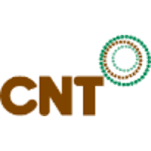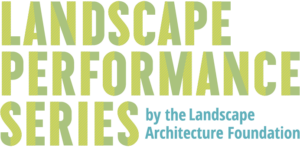Communities and organizations across the U.S. are working to implement Green Infrastructure practices where they live. Below are national and regional resources that are relevant to advancing Green Infrastructure in Texas.
| Organization | Description | Links to Programs, Initiatives, and Helpful Content | |
|
Federal Government agency that works to protect human health and the environment. |
Green Infrastructure
Smart Growth
Building Blocks for Sustainable Communities
|
Numerous resources to learn about green infrastructure, guidance for implementing it, and related programs for EPA partnership and support. A development and conservation approach aimed at holistic support of communities and the natural environment. A resource of Smart Growth’s Building Blocks for Sustainable Communities, the Flood Resilience Checklist, developed by the EPA in 2014, provides a helpful way to assess community plans for flood resilience. |
Urban Land Institute
|
Network of real estate and land use experts that set standards of excellence in development practice. |
Developing Urban Resilience |
Case studies of projects and policies enhancing resilience in urban real estate development. |
Climate and Economic Justice Screening Tool
|
The Climate and Economic Justice Screening Tool (CEJST) is a geospatial mapping tool that identifies areas across the nation where communities are faced with significant burdens. |
Climate and Environmental Justice Screening Tool |
The interactive map is organized into eight categories of burdens facing communities, each with their own map layers: climate change, energy, health, housing, legacy pollution, transportation, water and wastewater, and workforce development. |
|
Federal Emergency Management Association (FEMA) |
Federal Government Agency helping people before, during, and after disasters. |
Nature-Based Solutions
Grants
Floodplain and Wildlife Conservation |
A learning platform around nature-based solutions, from basic information to training and implementation. FEMA grants including preparedness grants, hazard mitigation assistance grants, and more. Integrated floodplain management and wildlife conservation tools and methodology. |
|
|
With environmental sustainability as a guiding principle, the Corps team is working diligently to strengthen U.S. security by building and maintaining America’s infrastructure and providing military facilities where Corps servicemembers train, work and live. |
Engineering With Nature |
The U.S. Army Corps of Engineers (USACE) Engineering with Nature® (EWN) Initiative enables more sustainable delivery of economic, social, and environmental benefits associated with infrastructure. |
|
|
APA advances planning through leadership in education, research, advocacy, and ethical practice. |
Supporting a Regional GI Network Though Local Policy and Action
Regional GI at the Landscape Scale
Green Infrastructure and Park System Planning
Financing GI Projects
Health and Green Infrastructure
GI in Underserved Communities
Planning for Equity in Parks with GI
|
A selection of relevant papers around green infrastructure policy, benefits, and implementation. |
Center for Neighborhood Technology
|
Funded by property taxes, the authority upholds a commitment to “providing safe, clean and enjoyable creeks and rivers,” which in its 83 years has led to a multitude of partnerships, research initiatives, and projects that integrate public health with ecosystems and sustainability with economic development. |
Green Values Calculator
RainReady |
The Green Values Calculator compares the performance, costs, and benefits of Green Infrastructure to conventional stormwater practices.
Resources to help communities address urban flooding. |
Regional Plan Association
|
An urban research and advocacy organization that works to improve infrastructure, sustainability, and quality of life in the New York – New Jersey – Connecticut region. |
9 Ways to Make Green Infrastructure Work
|
An eye-catching, easy to understand guide on incorporating Green Infrastructure into towns and cities. |
Georgetown Climate Center
|
Part of the Georgetown University Law Center, GCC works to inform the federal dialogue with lessons from leading states and communities on climate mitigation and adaptation. |
Adaptation Clearinghouse
GI Toolkit |
An online database and networking site that serves policymakers and others who are working to help communities adapt to climate change. Guidance for implementing green infrastructure practices including pilot projects and funding information. |
|
Landscape Performance Series
|
A program of the Landscape Architecture Foundation: focusing on measurable value, these initiatives provide tools to quantify benefits and make the case for sustainable landscape solutions. |
Flood Protection |
Case studies, fast facts, and tools related to flood protection. Additional case studies and resources are available on other topics. |
|
SITES is a rating system that guides, evaluates and certifies a project’s sustainability in the planning, design, construction and management of landscapes and other outdoor spaces. |
Green Infrastructure Tool
Projects |
Green infrastructure information through the lens of sustainable development. SITES rated projects showcasing green infrastructure and sustainable development practices. |

Vibrant Cities Lab |
A collaboration between the US Forest Service, American Forests, and the National Association of Regional Councils, that helps city managers, policymakers, and advocates build thriving urban forest programs. |
Water Quality
Resilience
City Planning
Low Impact Development Case Studies
|
Research, case studies, and guides related to urban green infrastructure. |
Center for Watershed Protection
|
The Center for Watershed Protection works to advance clean water resources and healthy ecosystems through responsible land and water management. |
Center for Watershed Protection |
Online database of research articles, stormwater and watershed manuals, assessment tools, regulatory information, and other watershed-related resources. |
National Oceanic and Atmospheric Administration
NOAA Office for Coastal Management |
Federal Agency that provides science, service, and stewardship related to climate, weather, oceans, and coasts. |
Natural Infrastructure
Green Infrastructure Effectiveness Database
National Flood Hazard Layer
Coastal Flood Exposure Mapper |
Trainings and tools around green infrastructure and resilience. A compilation of literature resources documenting the effectiveness and economics of nature-based solutions and green infrastructure for coastal resilience. A map layer showing current flood risk data including flood zone, base flood elevation, and floodway status. A mapping tool for coastal flood hazards. |
|
The Nature Conservancy is a global environmental nonprofit working to create a world where people and nature can thrive. |
Building a Case for Green Infrastructure |
A white paper developed by experts from The Dow Chemical Company, Shell, Swiss Re, and Unilever, working with The Nature Conservancy and a resiliency expert that states recommendations that green and hybrid infrastructure solutions should become part of the standard toolkit for modern engineers. |
|
Natural Resource Defense Council |
NRDC uses science, policy, law, and people power to confront the climate crisis, protect public health, and safeguard nature. |
Green Infrastructure: How to Manage Water in a Sustainable Way |
Report on the use of plants, soil, and natural systems to manage stormwater runoff. |

THIS WEBSITE IS FUNDED IN PART BY A TEXAS COASTAL MANAGEMENT PROGRAM GRANT APPROVED BY THE TEXAS LAND COMMISSIONER PURSUANT TO NATIONAL OCEANIC AND ATMOSPHERIC ADMINISTRATION AWARD NO. NA18NOS4190153.








 Sustainable SITES Initiative
Sustainable SITES Initiative


